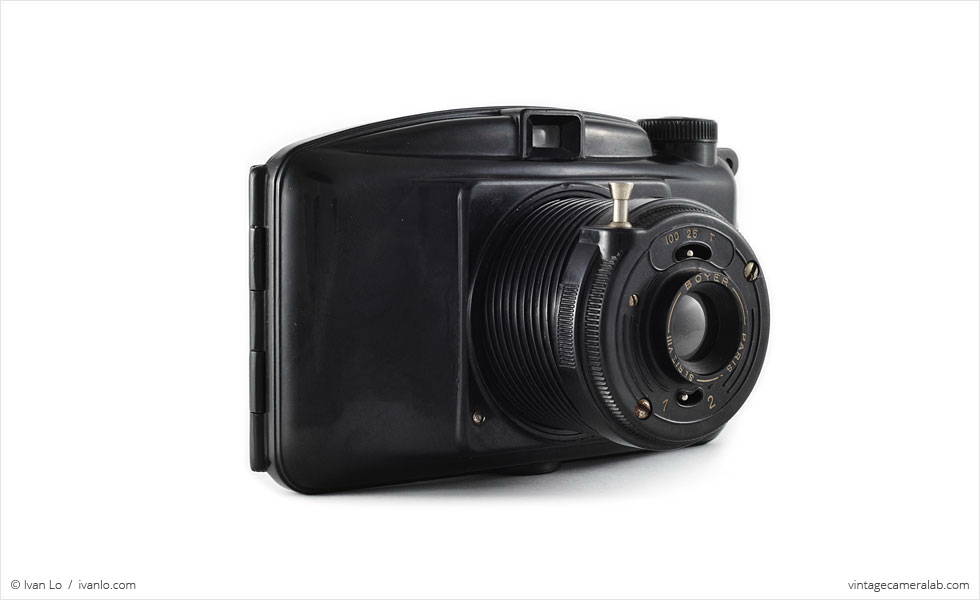M.I.O.M. Photax III Specifications
| Manufacturer: | M.I.O.M. |
| Origin: | France |
| Made in: | Vitry-sur-Seine, France |
| Introduced: | 1947 |
| Type: | Viewfinder |
| Format: | 620 Film |
| Dimensions: | 15.7 x 9.8 x 6.8 cm (closed) |
| 15.7 x 9.8 x 10 cm (open) |
M.I.O.M. Photax III Overview
The M.I.O.M. Photax III is a simple viewfinder camera made of Bakelite—an early plastic—produced by Manufacture d’Isolants et d’Objets Moulé, a now defunct French company that specialized in electrical insulators and plastic molding. M.I.O.M. made several different cameras before and after the Second World War including eight variations of their flagship Photax model between 1937 and 1960.
Like the vast majority of M.I.O.M. cameras, the Photax III utilizes a lens made by French optics company Boyer. In this particular case, it’s a simple meniscus lens labeled as a Boyer Serie VIII. The lens has two preset apertures labeled simply as “1” (approximately f/8) and “2” (approximately f/11) for “cloudy” and “sunny” days, respectively. The shutter has three speeds (1/100, 1/25, and Time) and is triggered by depressing the metal shutter button protruding from the top of the lens barrel. The knurled knob next to the viewfinder is used to advance the film while frames are kept track of through the red window located on the back of the camera.
The most unusual and distinctive feature on this relatively rare camera is its telescoping lens barrel which must be extended by “unscrewing” it from the body in order for the lens to focus properly. Many rival camera manufacturers imitated this basic design including Eastman Kodak with its Duex model.
I answered an online ad after seeing this beautiful camera for sale and drove out to the suburbs to pick it up from a very nice lady who was selling her son’s camera collection on his behalf. My original intention was to only buy three cameras: a Spartus 120, an Agfa PD16 Clipper, and this Photax III but after she showed me some cameras that she hadn’t listed yet, I ended up buying six including the Polaroid Big Shot I posted last week. What could I do? Her son has good taste in cameras and she gave me a great deal on them.
Find your very own M.I.O.M. Photax III on eBay.
McKeown, James M. and Joan C. McKeown’s Price Guide to Antique and Classic Cameras, 2001-2002. (Grantsburg, WI, USA: Centennial Photo Service, 2001), p 474.



















